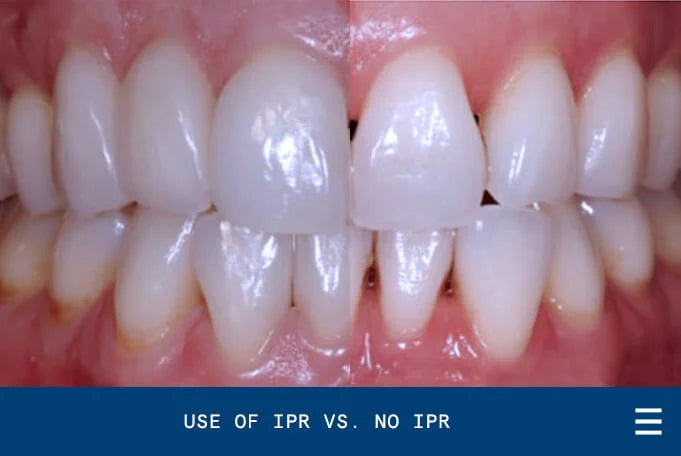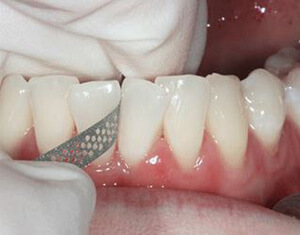
Is IPR Healthy For Your Teeth?
 By Dr. Wayne Hickory, DMD, MS, MDS
Thu, Mar 21, 24
By Dr. Wayne Hickory, DMD, MS, MDS
Thu, Mar 21, 24
At Evenly, we selectively use two important components of aligner treatment: Attachments and Interproximal Reduction (IPR). We discussed Attachments in our previous post. Now, let’s dive into IPR and its benefits for straightening teeth.
WHAT IS INTERPROXIMAL REDUCTION (IPR)
IPR is the light sanding or polishing of the enamel in between teeth, some doctors call it tooth slenderizing. IPR removes fractions of a millimeter of the tooth's surface in between certain teeth. This is a small amount compared to the overall thickness of the tooth’s enamel and provides enormous benefits for overall oral wellness. IPR is painless and quick and promotes a healthier, beautiful and more stable orthodontic result and is always planned using a computer model.
It’s important to understand that IPR is done only at the small area that the teeth are in contact. The IPR is performed according to the digital model using very thin sanding strips – similar to running mildly abrasive floss in between your teeth. These techniques are similar to the way dentists use metal strips to shape and polish fillings in between your teeth. Determining where to perform IPR depends largely on tooth shape. For example, incisors often have a triangular shape so when they are aligned, they may be touching in only a very small area. This is where we do IPR, creating a broader contact area between the teeth, resulting in more stable tooth contacts and an aesthetically pleasing smile.

BENEFITS
IPR has several valuable applications but the main purpose is to gain space and allow for teeth to fit tighter together, making them more stable and more beautiful. In some cases, IPR also eliminates the need to make space by extracting teeth or over expanding dental arches. Over expansion is a problem because it can lead to instability, recession and tooth loss, and is often seen in some direct-to-consumer aligner companies that do not have arrangements to do IPR and attachments. Another use of IPR is to reduce dark (empty) spaces at the gum line, because as teeth straighten, gum space may be created. Polishing between the teeth (IPR) also allows us to move the teeth closer together and minimize this empty space. Those empty spaces can be both unsightly and leave room for trapped food particles and plaque.

IPR, like all treatment planning decisions, should be determined by your doctor, not the aligner company. Some direct-to-consumer aligner products do not have advanced features like attachments and IPR which is a huge disadvantage and can lead to tooth instability, gum recession and even tooth loss. The lack of advanced strategies, such as IPR and Attachments when straightening teeth limits your ability to achieve a predictable, stable and beautiful result. In fact, orthodontists often need to retreat cases where attachments and IPR were strongly recommended by the doctor, but declined by the patient.
TAKE AWAY
Once you fully understand the health and aesthetic benefits of polishing or light sanding between teeth, it's clear that IPR is an important and valuable supplement to orthodontic treatment. It provides the necessary space needed for proper teeth straightening, reduces stress on periodontal support, gives teeth a better shape and reduces dark spaces at the gum line. Not all patients need IPR, our orthodontic team applies it based on your specific needs.

